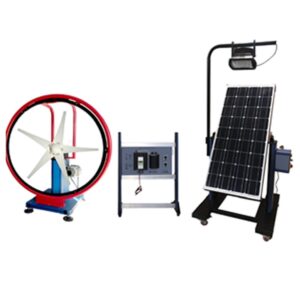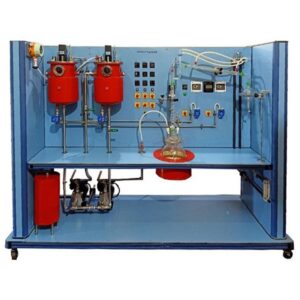The Biodiesel Process Trainer is an apparatus that allows the study of the biodiesel production cycle in different stages. Different parameters that affect the whole process, as well as the obtained biodiesel quality, may also be studied. Biodiesel is a biological and renewable fuel. It is obtained from used or raw vegetable oils or animal fats. It is used in automobile engines as a substitute for conventional fossil-origin gas oil. Its main advantages are related to energy and the environment. Among the energy-related advantages, we can mention that biodiesel constitutes a help for energy diversification and farming sector activation.
And among the environmental advantages we can mention the recycling of a residue such as used oil, or regarding the greenhouse effect, the fixation of the CO2 emitted in the biodiesel combustion during the growth of the crops. The Biodiesel Process trainer produces biodiesel from raw vegetable oil and allows the user to analyze the process and all the variables involved.
The process carried out by the Biodiesel Process Trainer consists of transforming the fatty acids contained in vegetable oils into a high energy content biofuel. Basically, the process consists of two well-defined stages: Stage I: Mixing the products with the stirring technique. It consists of combining and stirring the raw materials required to make biodiesel (vegetable oil and a catalyst) under homogenous heating provided by a heating element. This stage is carried out in a reactor made of polyethylene that includes a temperature sensor.
The stirring consists in recycling the product driven by a pump. Stage II: Separating and washing the products obtained. A second stage fundamental after the reaction is the separation of the main product from the rest of the by-products. It is usually done with the first two-phase decantation, thanks to the conical shape of the reactor, to remove the glycerin and biodiesel washing through ion exchange resin. Finally, the efficiency of the unit and the quality of the biodiesel can be assessed thanks to a balance and a titration kit (pipettes, droppers, etc.) (titration kit not provided).




